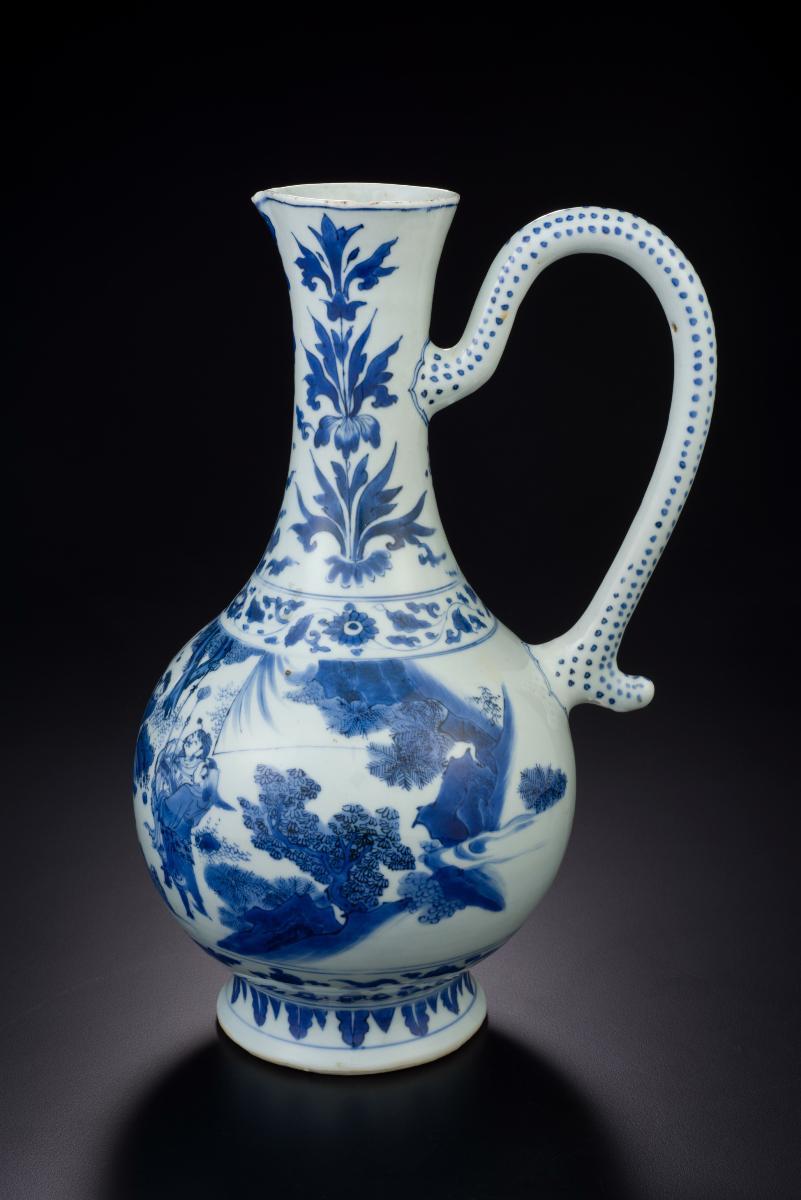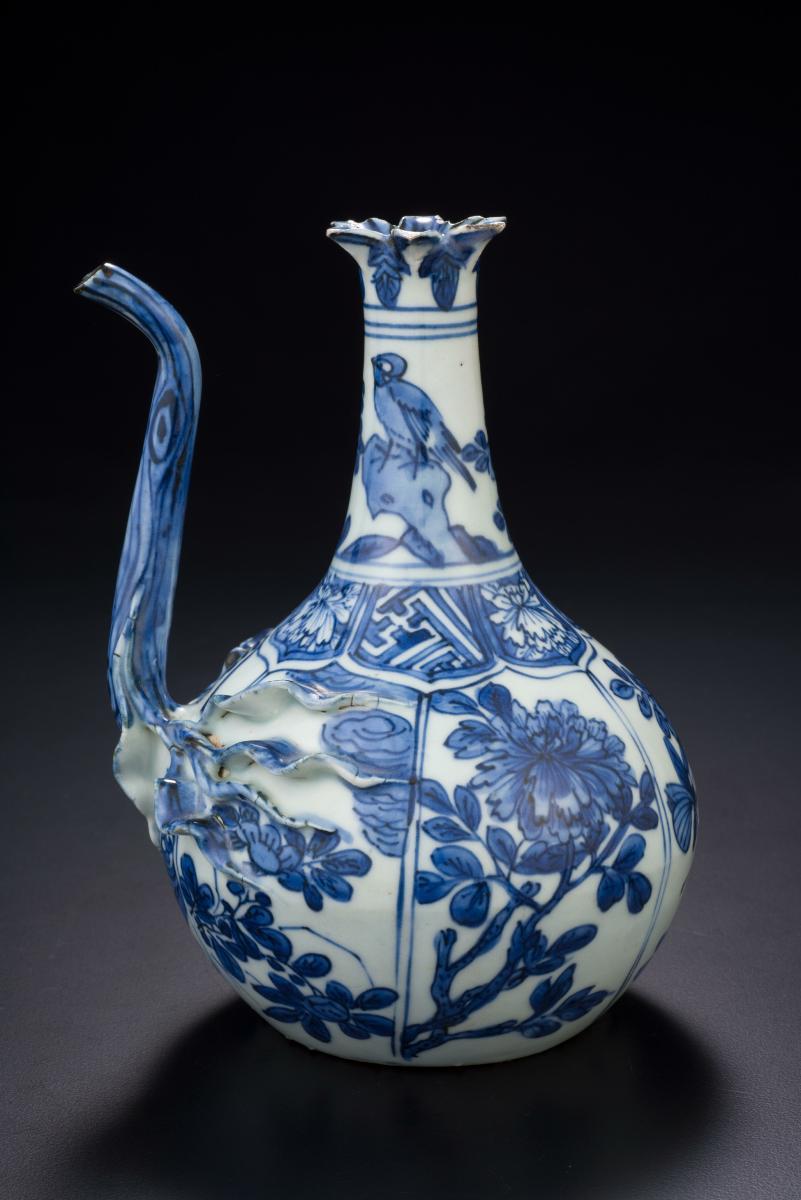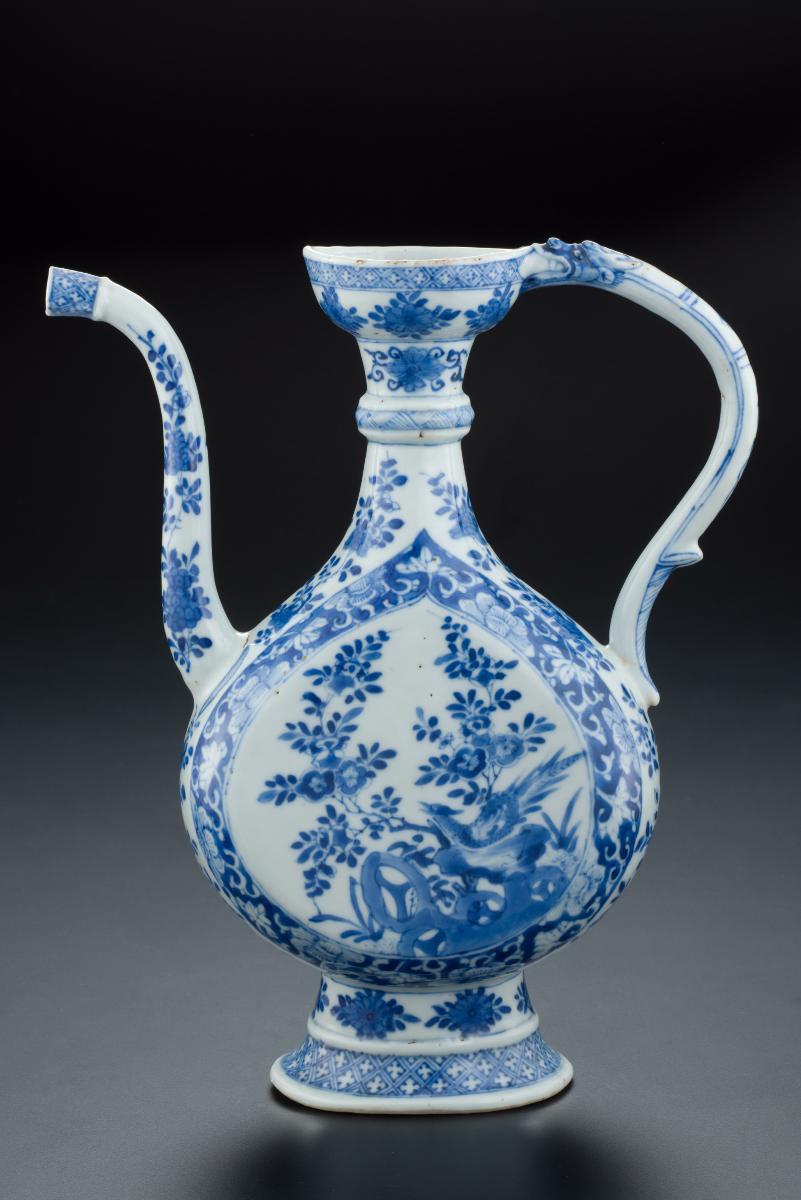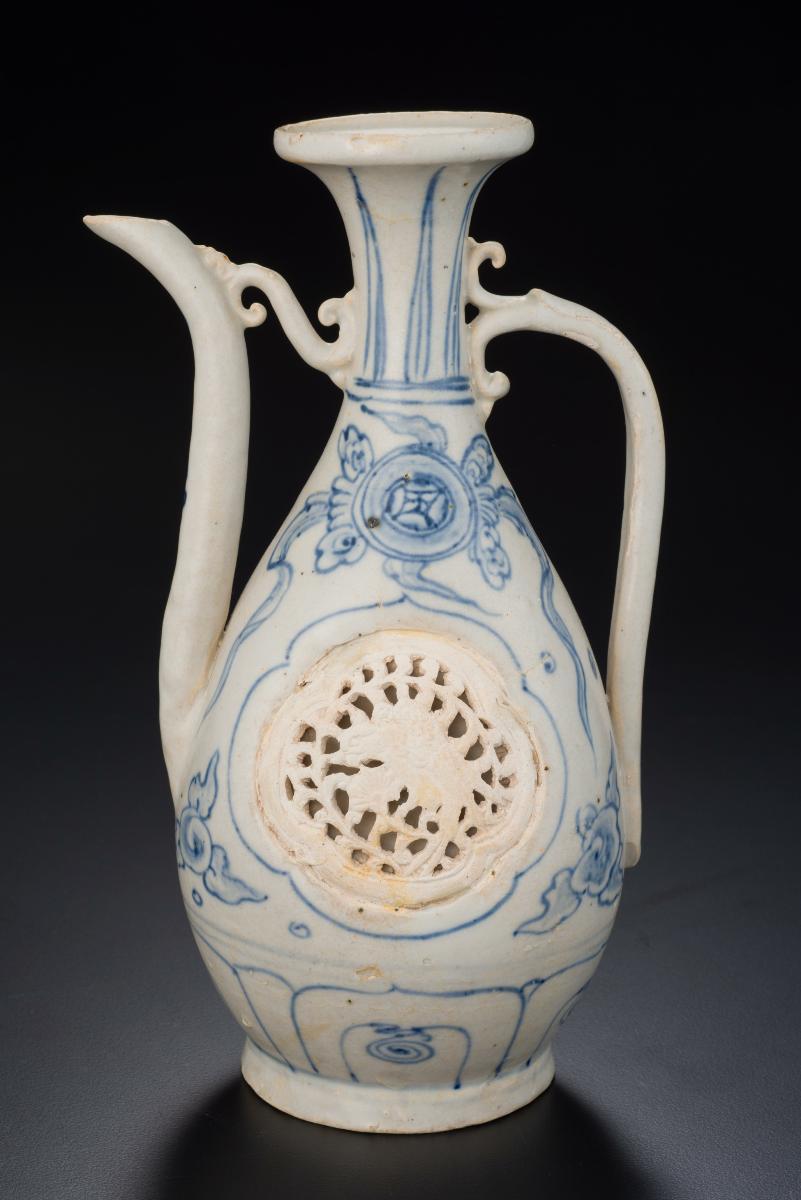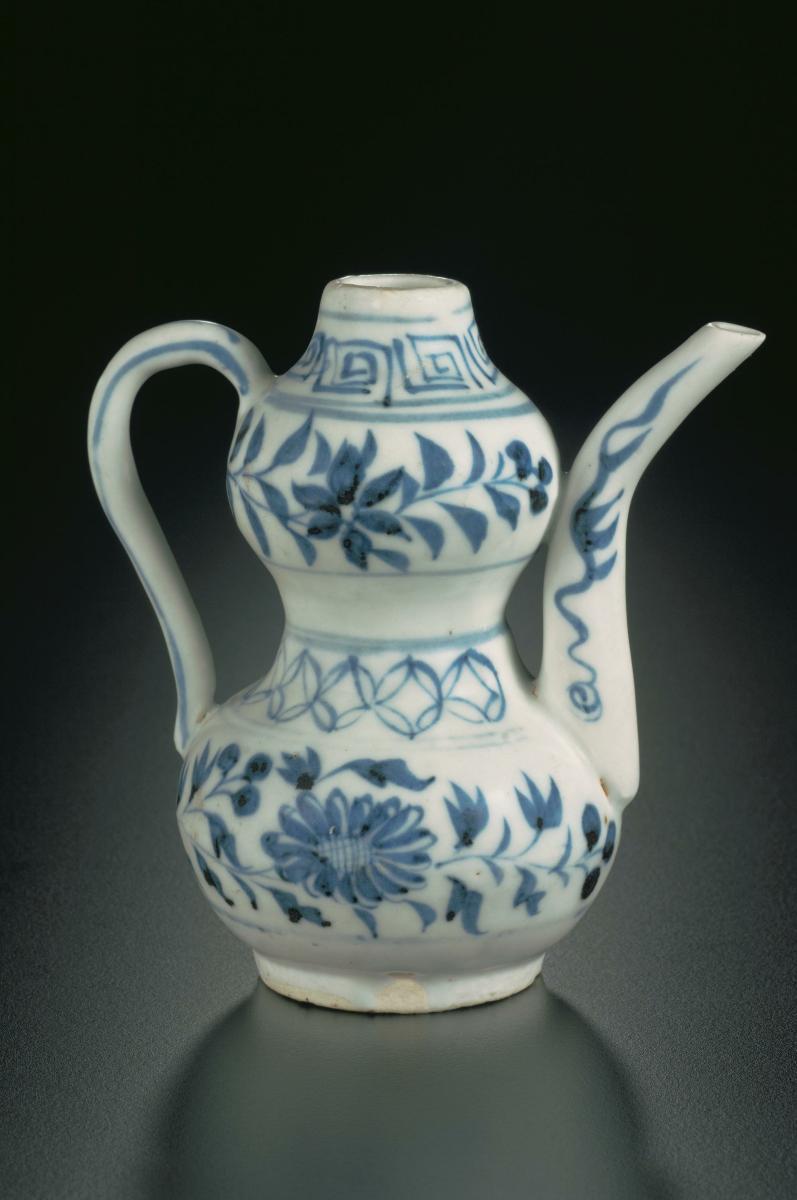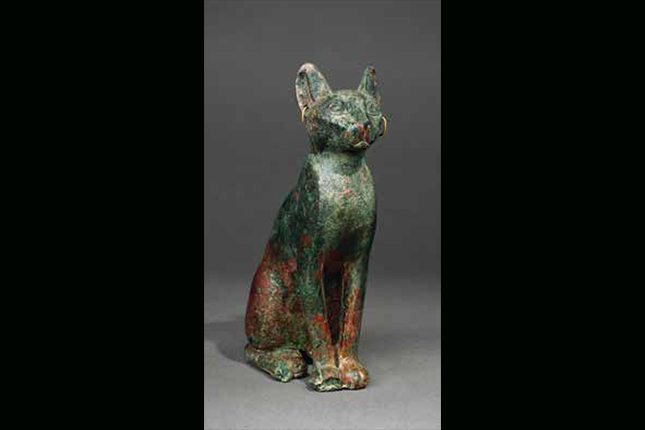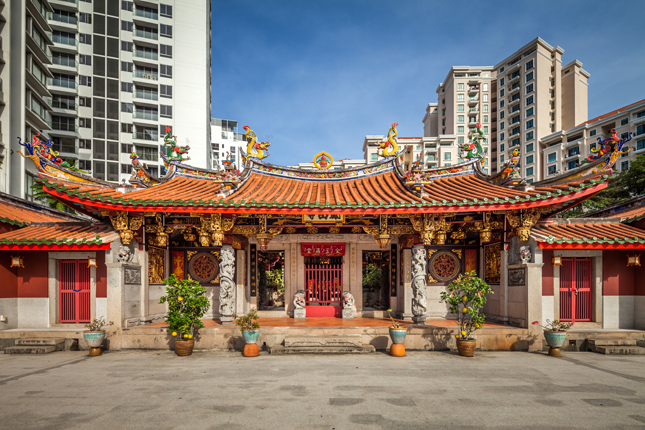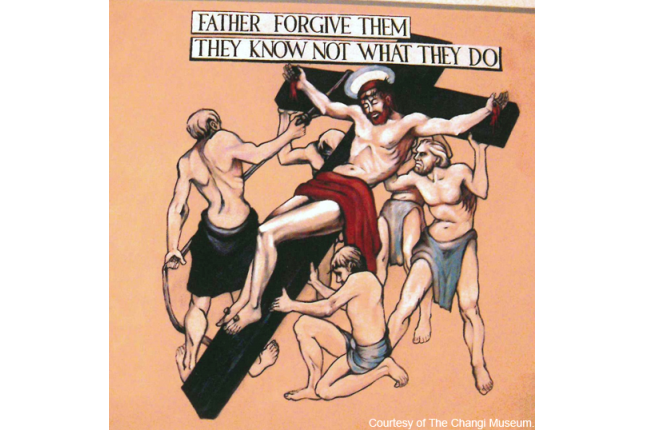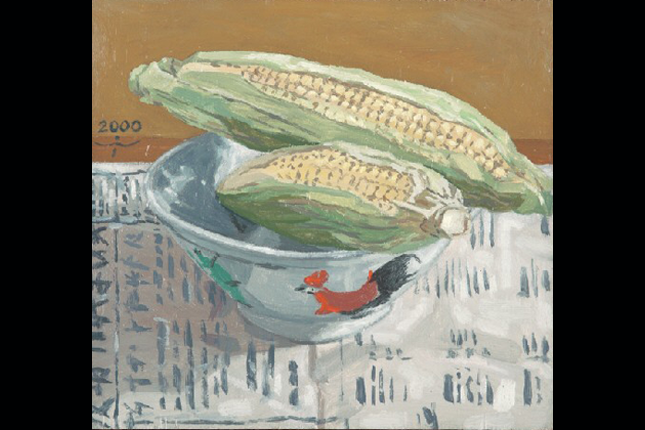of mouth: 8.2 cm
This pear-shaped ewer is decorated with a scene from 'The Parting of Su Wu and Li Ling' as documented in 'History of Han' (Hanshu). Su Wu was a Chinese diplomat sent by Emperor Han Wudi (r.140-87 BCE) to establish good relations with Xiong Nu, a nomadic tribe in Central Asia. This scene shows Li Ling, a Han Chinese general, who had surrendered to the Xiong Nu, and advising Su (who is facing him) to do the same.This ewer is an example of the kind of Chinese porcelain exported to Europe during the 17th century known as 'Transitional' wares. These wares were so called because they were produced during the transitional period from Ming to Qing rule in China – from 1620 (with the death of the Ming emperor Wanli) till 1683 when the Jingdezhen porcelain industry was revived by Qing imperial patronage. During this 63-year interval, lack of financial support from the imperial court led Jingdezhen potters to search for other markets. Eager customers were found overseas, particularly in Japan and Europe.




